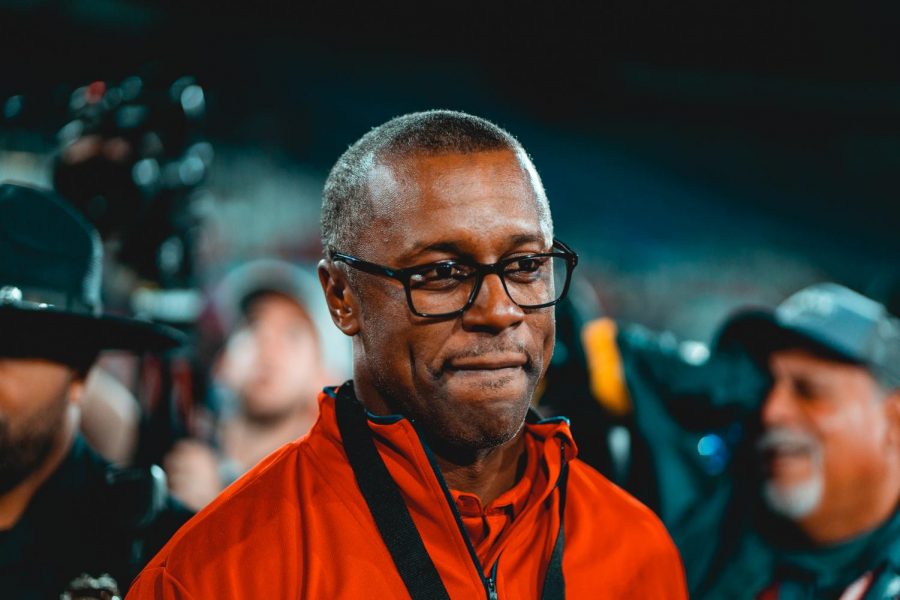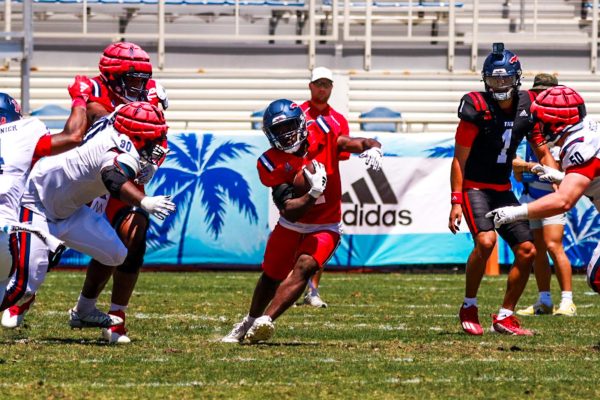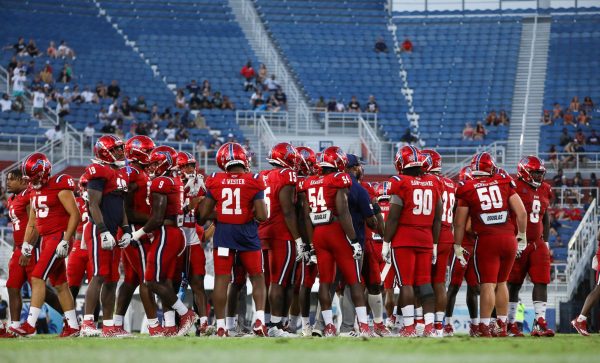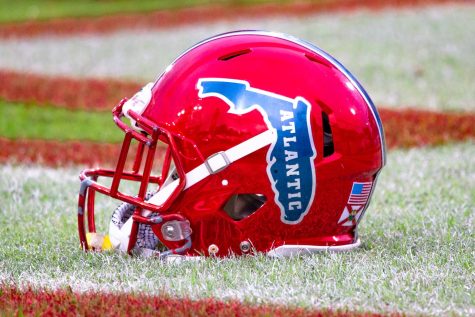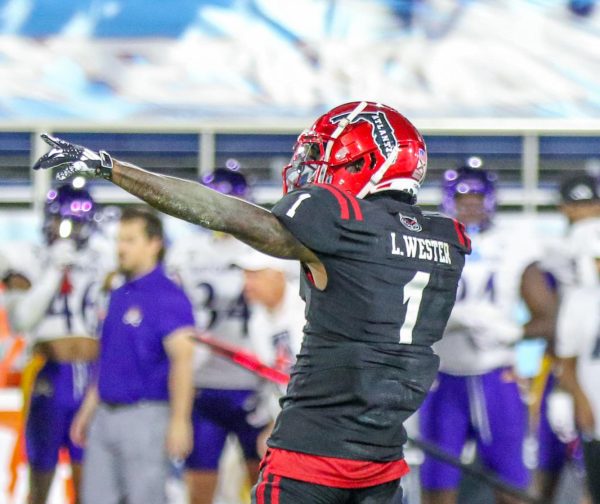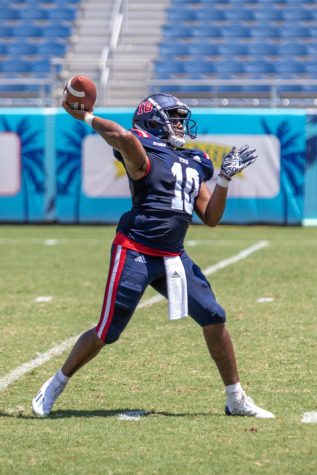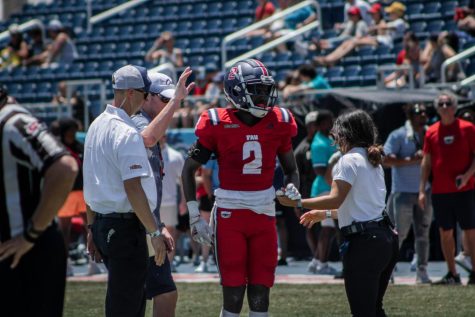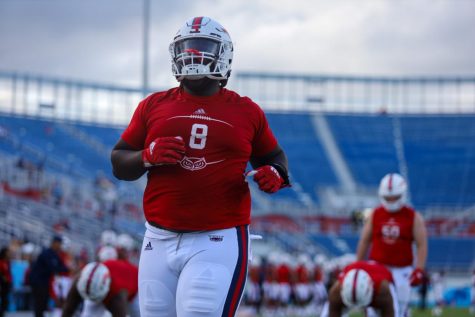PRINT: Opinion: False Start: How college football lets their Black coaches down
No matter how well they coach, Black coaches can’t outperform racism.
Willie Taggart at the Cheribundi Boca Raton Bowl on Dec. 21, 2019. He was named as the Owls’ new head football coach three days prior. Photo by Alex Liscio.
March 9, 2021
Editor’s note: This story is in the UP’s latest issue that can be found digitally through our Issuu page.
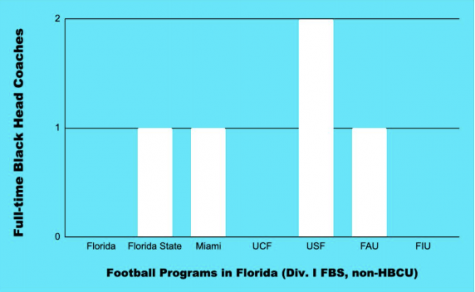
When FAU announced Willie Taggart as the next head coach of the Florida Atlantic Football team in December of 2019, he stepped into a territory that nobody that looked like him had ever been in. Taggart became the first Black coach in program history, a history that stretched back to 2001 when Howard Schnellenberger coached the Owls.
However, when you examine how many Black head coaches there are at the Division One FBS level of college football, it reveals an unsurprising trend. At the end of 2020, there were only 13 full-time Black college football head coaches at the Division One level, out of 130 Division One FBS football programs. That lines up to be 10 percent of coaches. This isn’t just a recent trend, Black coaches have been getting shut out of the head coaching office for years. Among the Division One FBS schools in the state of Florida, there has been only one full-time Black Head Coach at four of these schools, and Willie Taggart was the first and only for three of them.
I’ll get to why these disparities exist later, but the main reason there are only 13 Black head-coaches is simple. “Those who are making the hiring decisions have to start pulling the trigger on [hiring] Black coaches,” said the host of the Split Zone Duo college football podcast Richard Johnson. “We can talk about pipelines until we’re blue in the face, but this industry has to be able to walk and chew gum at the same time,” he added.
Now the question becomes, “Why aren’t decision-makers hiring Black coaches,” yet the answer is very simple. White people tend to hire other people that look like them; that’s what makes them comfortable. In a 2018 study published by Psychology Today, findings suggested that over 75 percent of white and Asian people have some sort of implicit bias. These implicit biases can cause fear and tribalism, and lead people to associate negative connotations with African-Americans. Take me, for example. I’m a large Black male. When I’m walking down the street, white people are going to think negatively of me. That’s implicit bias rooted in racism.
Now let’s translate this into modern times. According to the NCAA Database, in the year 2019, there were only 16 Black Athletic Directors (AD) in the Power Five Conferences out of 64. In non-Power Five Conferences, that number shrinks to four out of 67 positions. This means the people making the hiring decisions are white, therefore they will continue to hire people that look like them. However, these people in positions of power don’t reflect the people that are on the field putting their bodies on the line.
In the same year (2019), Black student-athletes comprised 46% of the student-athlete population at Power Five schools. In non-P5’s the number jumps to 52%. The diversity on the field doesn’t reflect the diversity within the offices, and that comes back to the people doing the hiring. Whether it be the ADs themselves, or independent search firms that are predominantly white, Black coaches are rarely even given a foot in the door due to the implicit biases described above.
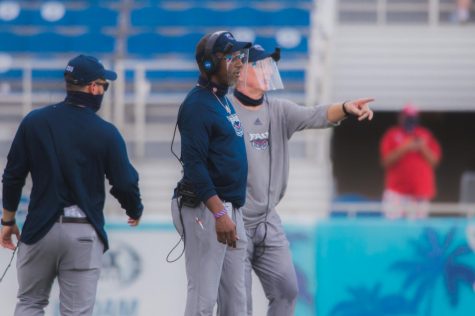
In the world of football, these biases weren’t only overt, they were also extremely racist. The quarterback position was always juxtaposed with being a “thinking man’s” position, and that rhetoric was used to block Black players from playing the position. This translated into the coaching profession, as the assumption became that Black people weren’t smart enough to hold leadership positions, and would be passed over repeatedly by their white counterparts. Due to this, former Black football players would all be placed at positions like a defensive back coach, or running back coach.
This is a concept called “racial stacking,” a phenomenon that has been around in football since professors D. Stanley Eitzen and David C. Sanford wrote about it in 1975. Eitzen and Sanford wrote that in the NFL in 1971, Black people made up 40% of the league. However, less than 10% of these players played quarterback, center, or linebacker. Johnson wrote about racial stacking among college football in 2017 for Banner Society. “When a Black player gets to a higher level of football, he gets out of the essential positions (quarterback, center, middle linebacker, safety) because those were, so to speak, thinking man’s positions. So when a Black player comes in and moves from quarterback to wide receiver, you take a future coach out of the pipeline.” Johnson also added that it’s rare to find a coach that didn’t play the position he coached, but that could happen. Willie Taggart is one such case. He was a record-setting QB at Western Kentucky in the mid-to-late ’90s, then moved to wide receiver’s coach at WKU before becoming offensive coordinator there. Before becoming a head coach, he was the running backs coach at Stanford. However, those are rare occasions and not the trend.
Even as the college football landscape begins to modernize and go for more “out of the box” hires, athletics administrators still pass over Black coaches. Johnson expanded on that as well. “Two of the most successful coaches of all time began as wide receivers coaches [Urban Meyer and Clemson’s Dabo Swinney]. Swinney was an internal promotion at Clemson. So they can think outside the box with these hires when they want to,” he said.
These “outside-the-box” hires were all over college football this hiring cycle. Of the 15 job openings in Division One FBS football, only Charles Huff ended up with a head coaching job( Marshall). Among the hires were a former QB coach for the New England Patriots (Jedd Fisch, Arizona), and a former graduate assistant at Clemson who happens to be the son of a legendary college football coach (Terry Bowden, UL-Monroe). These out-of-the-box hires seem to only get white coaches because they’re more likely to get the benefit of the doubt. Meaning, if these white hires don’t succeed initially, they’ll get more than a year and a half to keep their job (see: Scott Frost at Nebraska).
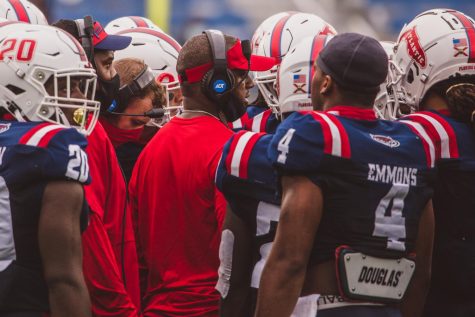
So, what can Black coaches do to break through and get more of these jobs? The short answer is, not much. One positive trend is the foundation of The National Coalition of Minority Football Coaches. The NCMFC, founded by Maryland head coach Mike Locksley, was formed in 2020 and focuses on “preparing, producing, and promoting” minority football coaches at every level, according to their website. In the section labeled, “Our Path to Success,” it says that the coalition will, “remove the roadblocks and level the playing field for minority football coaches.”
But here’s the thing: It shouldn’t have to take a coalition of Black coaches and the most powerful coach in college football history to level the playing field. It shouldn’t have to take articles written every summer by journalists who see these problems from the outside. The responsibility should be on the people in power. The athletic directors and the search firms, their biases, whether they be implicitly or explicitly racist, have to be changed by themselves. “The decision-makers’ hearts and minds have to be changed,” Johnson said, and I completely agree.
More Black coaches are going to come into the pipeline, and more Black coaches will be qualified to receive these jobs. But until the implicit biases of the decision-makers change, one thing will be certain in college football: If you’re a Black coach, you can’t out-scheme racism.
Joseph Acosta is the Business Manager of the Florida Atlantic University Press. For inquiries regarding this story or any other stories, email him at [email protected] or tweet him @acosta32_jp.

